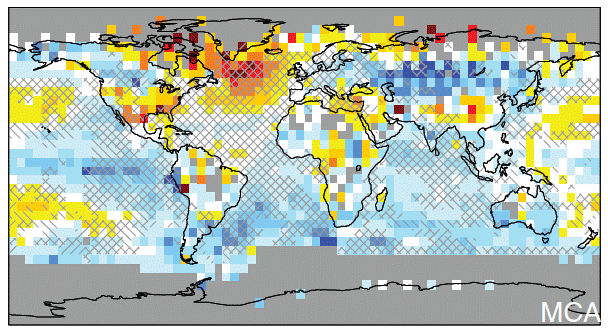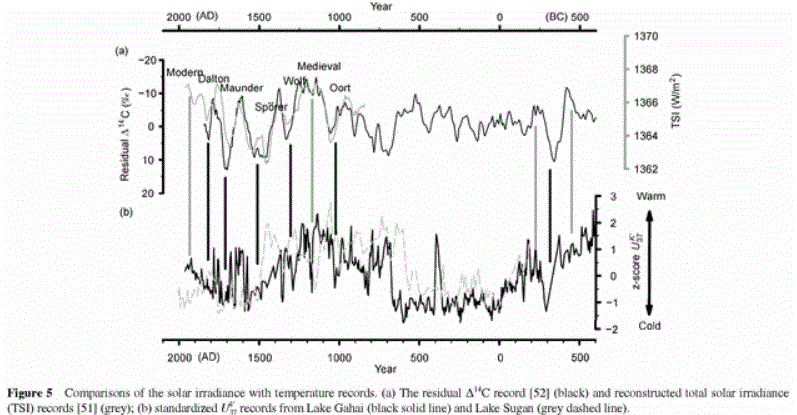The problem was the Atlantic region, which had an excellent amount of data to support the Medieval warmth. Here the temperatures stood at least at today's levels. Therefore Michael Mann searched around for other regions where far less data was available and found the Central Eurasian region would do just fine. The scarcity of available data left lots of room for interpretation. This is how the authors plotted a huge region of cold over a large swath of Central Eurasia during the Medieval Warm Period, which supposedly offset the inconvenient Atlantic warmth.

The surprise was big when the new, hard data showed the opposite was in fact true. It turns out that the region of the theoretical cold in the northern Tibetan Plateau during the Medieval Warm Period was indeed not colder but was warmer than today, see Science Bulletin.
In their paper, YuXin and his colleagues made yet another interesting discovery. In the abstract they write: 'Further, our temperature reconstructions, within age uncertainty, can be well correlated with solar irradiance changes, suggesting a possible link between solar forcing and natural climate variability, at least on the northern Tibetan Plateau.'
The surprisingly good synchronicity between sun and climate in the region of study is clearly visible from the study's chart:




Reader Comments
to our Newsletter